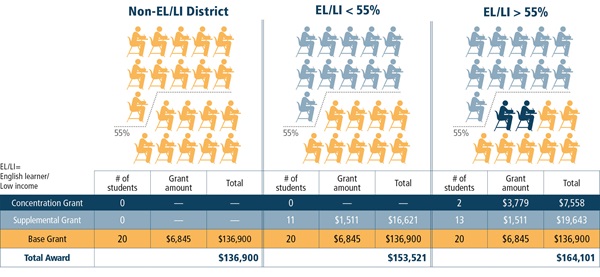CSBA at issue: You have questions, CSBA has answers
By:
Andrea BallFall 2013
When I entered a first-grade classroom on a visit last year, I noticed a photo of the president of the United States posted just inside the doorway, at eye level for a first-grader. It struck me that classrooms of first-graders across the country will grow up walking by photos of President Obama, and see that an African American can become president of the United States.
That visit came to mind as I completed this article in late August. The nation was recognizing the 50th anniversary of the 1963 March on Washington. This was a time to honor the past, acknowledge the present, and plan for the future. The news footage of Dr. King at the Lincoln Memorial and President Obama’s speech from that same spot 50 years later brought home to me that we have made progress towards our goal of equality, yet we know much remains to be done.
Education plays a central role in reaching this goal. Just as our schools have made progress in closing gaps in student achievement, there remains much to be done to eliminate these gaps. Governing boards play a critical role in this work.
Governing boards are starting the school year transitioning to the Local Control Funding Formula. Enacted as part of the state budget, LCFF is based on principles of subsidiarity—that is, entrusting authority to the local level as much as possible—and equity. It changes funding allocation and accountability, and calls for greater involvement of parents and other stakeholders. The combined promise and challenge of LCFF is transparency in decision making and alignment of expenditures with the Local Control and Accountability Plans that the funding formula requires in order to set goals and strategies for improved student outcomes. Governing boards are faced with doing business in new ways to make a difference for students, especially those who are the most disadvantaged.
To help our members successfully implement LCFF, CSBA has been conducting events online and in the field. Under the leadership of Executive Director Vernon M. Billy, we’re reaching out to a diverse group of stakeholders to collaborate in these efforts. We’ve developed materials and identified best investments for governing teams—these are available on our website: www.csba.org/LCFF.
Andrea Ball (aball@csba.org) is a legislative advocate for the California School Boards Association.
School funding before and after LCFF
This chart summarizes the basics of how funding and accountability worked before LCFF and after. The five points listed in the third column of the chart remind us of elements that remain unchanged.

How the formula works
This chart shows how LCFF funding is calculated for school districts: Base grant funding is a per-ADA amount. Supplemental funding is provided at 20 percent of the base grant and calculated by unduplicated counts of students in the target groups of low-income students, English learners and foster youth. Concentration funding goes to those districts where enrollment of the students in the target groups is more than 55%; it is calculated based on the number of unduplicated students exceeding 55 percent.

Eight Areas of State Priority Must Be Addressed in LCAPs
(Local Control and Accountability Plans)
- Basic services
- Course access
- Implementation of Common Core State Standards
- Other student outcomes
- Parental involvement
- School climate
- Student achievement
- Student engagement
AEC will have lots on LCFF
The first phase of CSBA’s outreach on the Local Control Funding Formula will culminate in the 2013 Annual Education Conference and Trade Show in San Diego Dec. 5-7. Nearly a dozen LCFF-related presentations are planned as of press time, from AEC’s opening day to the State of the State panel discussion that closes the 2 ½-day conference.
Related links: